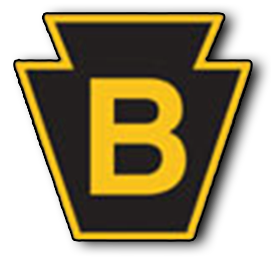
PA Trolley Museum
The streetcar, or “trolley,” played a vital role in the growth of 20th century American cities. Thanks to its high-speed, efficient transportation, people could live much farther from their work than if they had to walk or rely on horse-drawn cars. As a result, cities expanded along the streetcar routes built out from their centers. Many of today’s thriving suburban communities owe their existence to the streetcar. Streetcars served America through two world wars and a depression, but affluence and automobiles caused the end of the Trolley Era. As streetcars were phased out, groups of railfans formed to preserve trolleys for future generations. One such group, the Pittsburgh Electric Railway Club (PERC), acquired the property that would eventually become the Pennsylvania Trolley Museum. PERC purchased its first trolley in 1949 and motored its three-car collection to Washington County in 1954. Construction began on a building that would house the streetcars. Track and overhead lines followed and by December, 1962, the first streetcar was operational. The following year, in 1963, the museum received its first official visitors. Since then, the museum has seen several decades of expansion: the car collection, the existing track, and the storage and visitor buildings have all seen major growth. Today, the Pennsylvania Trolley Museum owns nearly 50 street and rail cars, 20 of which are operational on the museum’s four miles of track. 30,000 visitors each year are treated to a hands-on, moving history lesson. After all, that’s the main appeal of the Pennsylvania Trolley Museum: visitors don’t just “see” the past up close; they “experience” it for themselves on an unforgettable ride through the countryside. With the help of PTM’s 150 volunteers (and counting!), we are committed to keeping that experience alive for generations to come. For more information visit Pa-Trolley.org
Did you like this article? See more in the News

